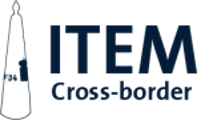Societal border impact assessment and knowledge dissemination
ITEM Cross-Border Impact Assessment method
What are the effects of national and EU policies and legislation on border regions?
Are border workers affected by new or soon-to-be-implemented national or EU policies or legislation?
One of ITEM’s main objectives is to set up and conduct an annual Cross-Border Impact Assessment. Currently, there is a lack of information on the (expected) impact of national and EU policies and legislation on border regions. This applies at all levels: European, national and regional. The ITEM cross-border impact assessment methodology maps and assesses effects of policy and legislation on the border region and cross-border mobility and cooperation. The use of the ITEM cross-border impact assessment methodology contributes to the debate on evidence-based policy, and to providing social insight into border effects and cross-border solution possibilities for border issues. ITEM therefore annually publishes a detailed Cross-Border Impact Assessment report on key issues in policy and legislation. These efforts by the ITEM expertise centre have been recognised by the European Commission as good practice in DG REGIO’s Communication “Boosting Growth and Cohesion in EU Border Regions”.
In 2019, the ITEM cross-border impact assessment methodology was commissioned by the Dutch Ministry of the Interior and Kingdom Relations to be incorporated into the Guideline on Border Effects for Dutch ministries when preparing new or amended policy. From 2021, Border Effects has become a mandatory quality requirement under the Integral Assessment Framework (now: Policy Compass, Beleidskompas), the assessment framework for determining new policy.
“In border areas, policies and regulations can have different consequences than in the rest of the Netherlands. This could be if policies or rules are different in neighbouring countries. It may also be because opportunities for free movement of people, goods and services are affected. These effects arise especially in border areas, because the neighbouring country is close by which daily activities across the border can be affected. The quality requirement Border effects obliges you to consider these border effects when making or amending policies, laws and regulations.” (Policy Compass)
Within Europe, this is a unique tool to date, also recognised by the European Commission in Communication “EU border regions as living labs of EU integration”. ITEM provides training in border impact assessment for officials in both The Hague and Brussels.
Want to know more about the method? Read our paper here and/or watch the video.
Research request
Do you have a structural or fundamental cross-border issue that needs scientific research? Are you interested in background information and analysis of cross-border issues?

